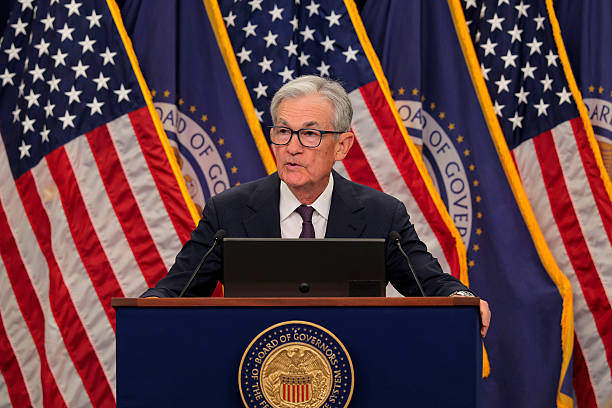Fed Cuts Rate as Labor Market Weakens, Political Pressure Mounts
The Federal Reserve cut its key interest rate by a quarter-point due to a weakening labor market, with officials projecting two more cuts this year despite persistent inflation and facing political pressure from the Trump administration.
 Federal Reserve Chair Powell Holds Monthly News Conference On Interest Rates
Federal Reserve Chair Powell Holds Monthly News Conference On Interest RatesThe Federal Reserve lowered its benchmark interest rate by a quarter-point on Wednesday, a move signaling growing concern over the nation’s labor market as hiring has stalled and the unemployment rate has crept higher. The decision, the first rate cut since December, brings the Fed’s short-term rate down to about 4.1% from 4.3%.

The central bank’s shift comes after a year of keeping rates unchanged while assessing the economic impact of tariffs, stricter immigration enforcement, and other administration policies. While inflation remains stubbornly elevated at 2.9% in August, slightly above the Fed's 2% target, the central bank’s focus has moved to jobs, with Chairman Jerome Powell noting at a press conference that “the downside risks to employment appear to have risen.”
The rate cut could make borrowing cheaper for mortgages, car loans, and business loans, potentially stimulating growth and hiring. Looking ahead, Fed officials projected two more rate cuts this year but only one in 2026. This contrasts sharply with Wall Street expectations for five cuts through the end of next year. The S&P 500 reacted to the news, ticking down 0.1% after Powell’s press conference.
The decision was not unanimous. Stephen Miran, a new Trump appointee who was confirmed by the Senate just hours before the meeting, was the sole dissenter, favoring a larger half-point cut. Powell stated there was "not very much support" for the bigger cut among other officials. The outcome suggests Powell was able to maintain a show of unity on a committee facing significant internal differences. Seven policymakers indicated they don’t support any further cuts this year, two supported one more cut, and ten favored at least two more. One official, likely Miran, indicated support for several large cuts to bring the rate to 2.9% by year's end. Powell acknowledged the divergence reflects the uncertain economic outlook.
The Fed’s move also comes amid unprecedented political challenges to its independence. Trump is attempting to fire Fed governor Lisa Cook, an action legal scholars have called an unprecedented attack on the central bank’s autonomy. An appeals court upheld a ruling blocking the firing on Monday, citing Cook’s due process rights were violated. Trump has accused Cook of mortgage fraud, a charge she denies. Despite the court ruling, the administration has requested the Supreme Court to immediately allow her removal.
Trump has publicly criticized the Fed and Powell for not cutting rates more aggressively, suggesting they should listen to "smart people like me" and reduce rates by three full percentage points. In response to a question about the Fed's independence, Powell stated, "I don’t believe we’ll ever get to that place. We’re doing our work exactly as we always have now.”
The Fed’s rate cut puts it at odds with other major central banks. The European Central Bank left its rate unchanged last week as inflation has cooled, and the Bank of England is expected to do the same on Friday as it deals with inflation at 3.8%.
This video gives a general overview of the Federal Reserve's role and how its policies affect the economy.
















Conversation